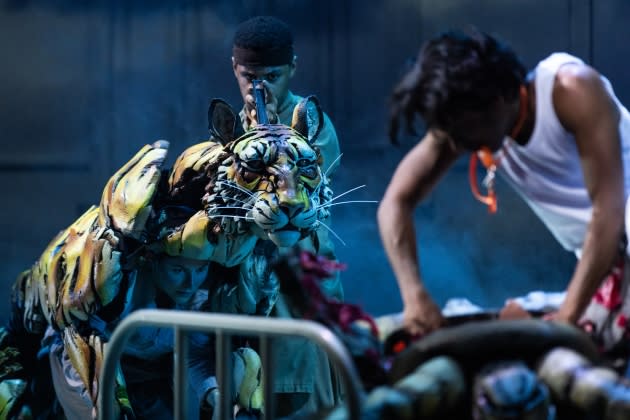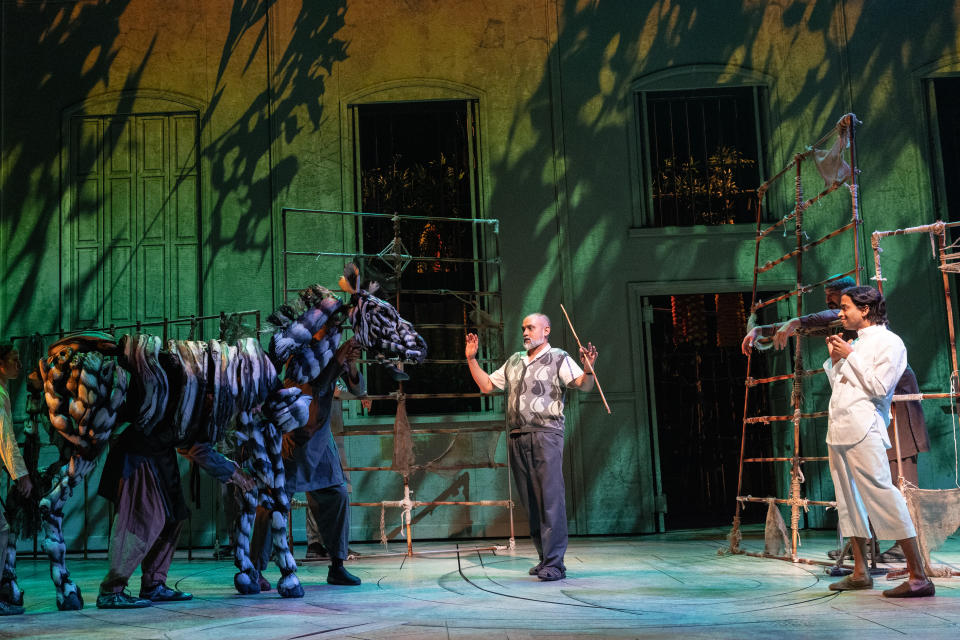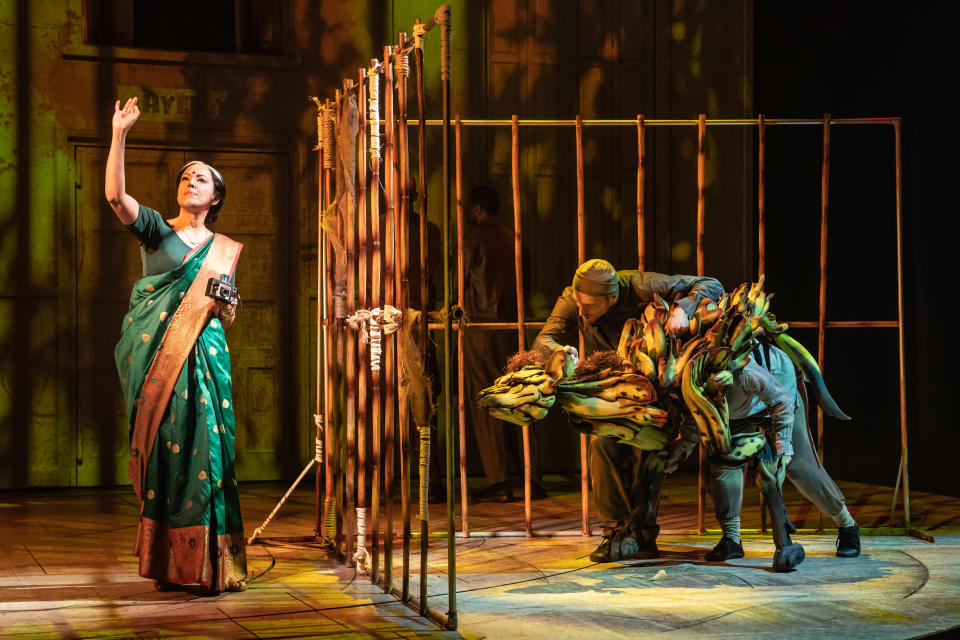Bringing ‘Life of Pi’ Alive on Broadway Through Puppetry

Early on in “Life of Pi,” a goat walks across the stage at the Schoenfeld Theatre — and is followed shortly after by a zebra. Based on Yann Martel 2001’s novel, the new Broadway production requires more suspension of disbelief than is typically required of theater-goers: one of the main characters is a true-to-size Bengal tiger.
The animals in the production are the work of co-puppet designers Finn Caldwell and Nick Barnes; Caldwell also leads the show’s puppetry and movement direction. The play premiered at the Sheffield Theater and debuted on London’s West End in 2021, winning five Olivier Awards, including best new play, best actor and best set design, including puppetry. The production transferred Stateside late last year for a limited run at the American Repertory Theater in Boston before heading to Broadway. The show, currently in previews, opens March 30.
More from WWD
“Nick and I tend to put our energy into shows when the puppets are lead characters. So that was a big draw,” says Caldwell, who’s worked on productions including “War Horse” and “Angels in America.” “The puppet is a lead character and it’s affecting the narrative, and it has a real reason to be a puppet. The simple reason is you couldn’t put a live tiger on stage, but the other reason is that this show is about storytelling, imagination and what you believe is real. And puppetry is a great metaphor for that.”

In the staged version of the story, the titular Pi recounts his journey by boat from India to Canada with his family and their zoo animals. The trip takes a tragic turn when Pi ends up stranded at sea in a lifeboat with the tiger. Caldwell viewed the storyline as a chance to “to develop a kick-ass puppet, but also to develop a very subtle relationship between a human and an animal,” he says.
“They’re learning to survive together. And so the interchanges are really primal,” Caldwell adds, shortly before a recent afternoon rehearsal of the show. “I saw that as an exciting opportunity to explore how subtle and adventurous we could be with the acting of the puppet.”
The puppets are crafted from plastazote, a foam that is lightweight enough to be hoisted and manipulated by performers, and carved to resemble the appearance of wood.
“In this version of the story, Pi’s recounting [the story of what happened] to the investigators in the hospital after the fact,” Caldwell says. “So we imagined him on this lifeboat sitting in the middle of the wreckage of all this ship. And as he recounts the story, out of the flotsam and jetsam of the driftwood and the rope, he imagines these [animals] being brought together.”
The puppet designs are based on the skeletal anatomy of their real world counterparts, to accurately replicate the animal’s natural movement and allow for a broad range of emotional expression. “We look specifically at where the joints are in relation to each other, and sometimes that gets warped a little bit by putting [performers] inside or around it,” Caldwell says. “But for the most part, the tiger, the hyena and the rest of them want to move like the animal because they’re anatomically built that way.”

“It’s quite a challenge because puppets tend to work very well if they’re not majorly naturalistic,” says Barnes, noting they aim to avoid having their designs enter the “uncanny valley” by giving them an abstract quality. “But on a show like this, you can’t be naive in that way. It needs an element of detail or realism. It’s a juggle.”
The puppets are controlled onstage by performers — the larger puppets, such as the tiger, require a multiperson team — who are visible to the audience and costumed to match the set’s aesthetic. The Broadway cast includes puppeteers from the West End production, alongside performers from the American puppetry community.
Caldwell worked on the original production of “War Horse,” which was renowned for its large horse puppets. It was the last mainstream Broadway production to employ puppets at a similar scale as “Life of Pi,” and Caldwell notes that he’s excited about continuing to take on stories that seem impossible to translate to the stage and show audiences what’s possible through large-scale puppetry.
So far, audiences have been more than willing to go along for the ride.
“A big part of making the audience believe these impossible staging things is by asking them to come along with us on sort of a game, like we do as children,” Caldwell says. “Saying, ‘Do you wanna believe that this is real? Come on — let’s all believe. Let’s jump in the water.’”

Launch Gallery: A Closer Look at the Puppets of 'Life of Pi' on Broadway
Best of WWD


